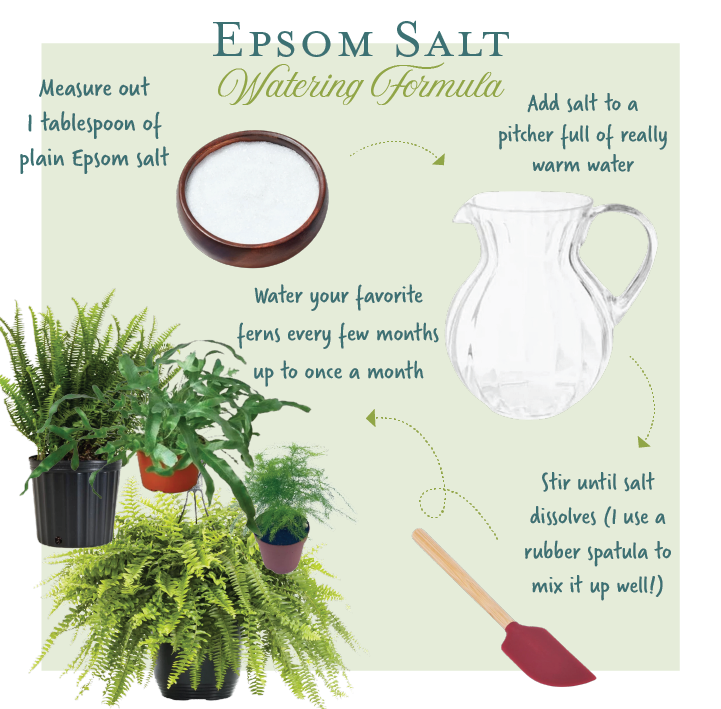Epsom Salt in Horticulture: What Plants Don't Like Epsom Salt and Just How to Readjust
Epsom Salt in Horticulture: What Plants Don't Like Epsom Salt and Just How to Readjust
Blog Article
Learn More About the Particular Plants That Are Detrimentally Influenced by Epsom Salt Application
Epsom salt, a popular house solution for numerous gardening concerns, is commonly commended for its beneficial results on plant development. Comprehending the particular plants that can be negatively impacted by Epsom salt is important for any kind of gardener looking to enhance their plant treatment routine.
Roses

Roses, particularly conscious changes in their setting, can be adversely influenced by the application of Epsom salt. While Epsom salt is generally utilized as a fertilizer to advertise plant development and improve blooming, roses are just one of the plants that do not react well to its application. The high magnesium content in Epsom salt can hinder the uptake of various other necessary nutrients by the rose plants, leading to shortages that materialize as yellowing fallen leaves or stunted growth.

Tomatoes
While Epsom salt is usually promoted as a treatment for different plant issues, including bloom end rot in tomatoes, its application can lead to detrimental results if not used judiciously. Excessive Epsom salt, which is magnesium sulfate, can interfere with the fragile nutrient balance needed by tomatoes, possibly leading to deficiencies in various other necessary nutrients like calcium. When thinking about the usage of Epsom salt on tomatoes, it is essential to stick to advised application rates and soil testing to stop unexpected consequences on the general health and wellness and efficiency of these precious yard plants.
Peppers
Peppers, prized for their numerous colors and levels of spiciness, can show vulnerability to negative influences from Epsom salt when not used with care and consideration for their certain nutritional demands. what plants don't like epsom salt. Peppers, belonging to the Solanaceae household, require a fragile balance of nutrients to prosper. While Epsom salt is known to boost magnesium levels in plants, too much application can disrupt this stability, leading to damaging effects on pepper plants
When peppers are exposed to high degrees of magnesium from Epsom salt, it can disrupt the plant's capability to soak up other necessary nutrients like calcium and potassium. This inequality might show up in signs and symptoms such as leaf staining, stunted growth, and decreased fruit production. Additionally, the extreme magnesium can alter the soil pH, additional worsening nutrient uptake concerns for peppers.

Rhododendrons
Offered the sensitivity of specific plant species to discrepancies triggered by Epsom salt, it is essential to consider the effect on Rhododendrons, which likewise require particular nutrient levels to prosper. Rhododendrons are acid-loving plants that favor acidic soil conditions with a pH range between 4.5 and 6.0. Epsom salt, chemically referred to as magnesium sulfate, can alter the soil pH and disrupt the delicate equilibrium of Visit Your URL nutrients necessary for Rhododendron wellness.

To keep the ideal growth and health of Rhododendrons, it is crucial to avoid the unplanned use of Epsom salt and rather concentrate on offering the specific acidic dirt problems and nutrients that these plants require for flourishing.
Azaleas
These preferred flowering plants are commonly found in parks, gardens, and landscapes due to their charm and convenience. While Epsom salt is frequently made use of as a treatment for magnesium shortage in plants, its application to azaleas can have negative impacts.
When Epsom salt is related to azaleas, it can modify the soil pH, making it a lot more acidic. Azaleas favor somewhat acidic soil conditions, and an extra of magnesium from Epsom salt try this site can interrupt this equilibrium, resulting in nutrient inequalities and potential toxicity issues. The inaccurate application of Epsom salt can cause stunted development, yellowing of leaves, and general decrease in the wellness of azaleas. As a result, it is important to be mindful when considering making use of Epsom salt on azaleas to stop any kind of negative consequences on these delicate decorative shrubs.
Final Thought
In final thought, it is important to be mindful of the specific plants that can be negatively influenced by the application of Epsom salt. Roses, tomatoes, rhododendrons, peppers, and azaleas are some instances of plants that may not take advantage of Epsom salt and could also experience injury. It is critical to research and comprehend the demands of each plant types before using Epsom salt as a plant food to ensure their wellness and well-being.
Comprehending the specific plants that can be detrimentally affected by Epsom salt is vital for any gardener looking to enhance their plant care regimen. While Epsom salt is commonly utilized as a plant food to advertise plant development and enhance flowering, roses are one important link of the plants that do not respond well to its application.Excessive use of Epsom salt can additionally result in an accumulation of salts in the dirt, leading to root damage and dehydration of the rose plants. While Epsom salt is known to increase magnesium degrees in plants, too much application can interrupt this equilibrium, leading to unfavorable impacts on pepper plants.
The high salt web content in Epsom salt can additionally dry out Rhododendron roots, triggering additional anxiety and damages to the plant. (what plants don't like epsom salt)
Report this page